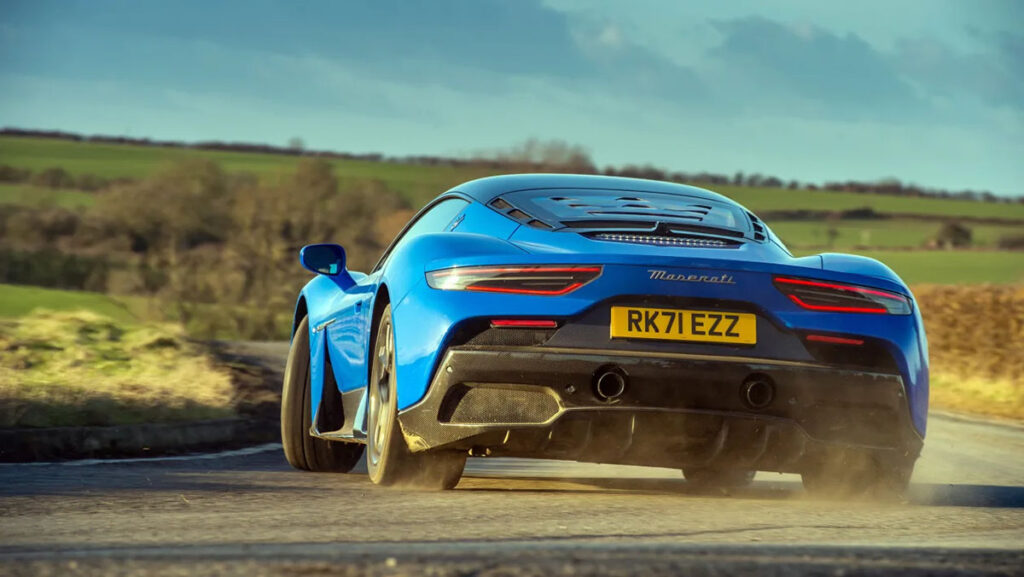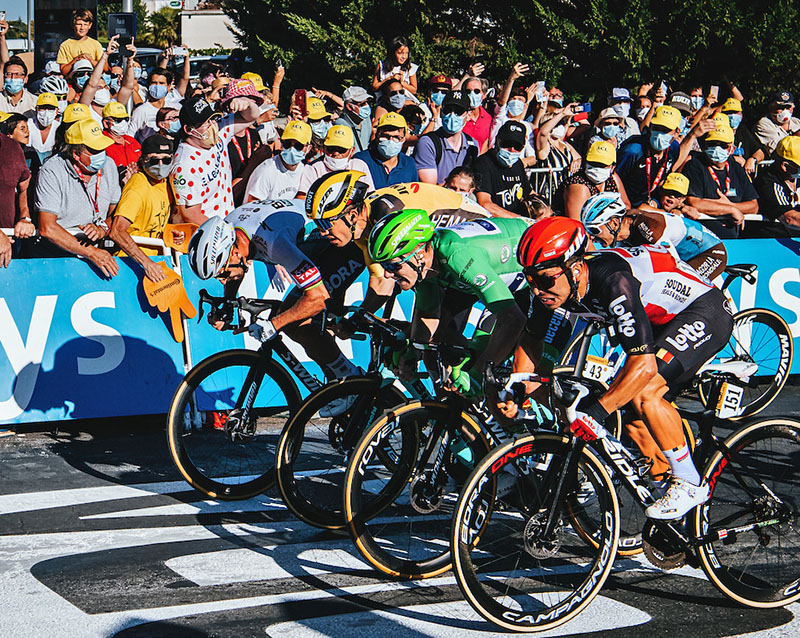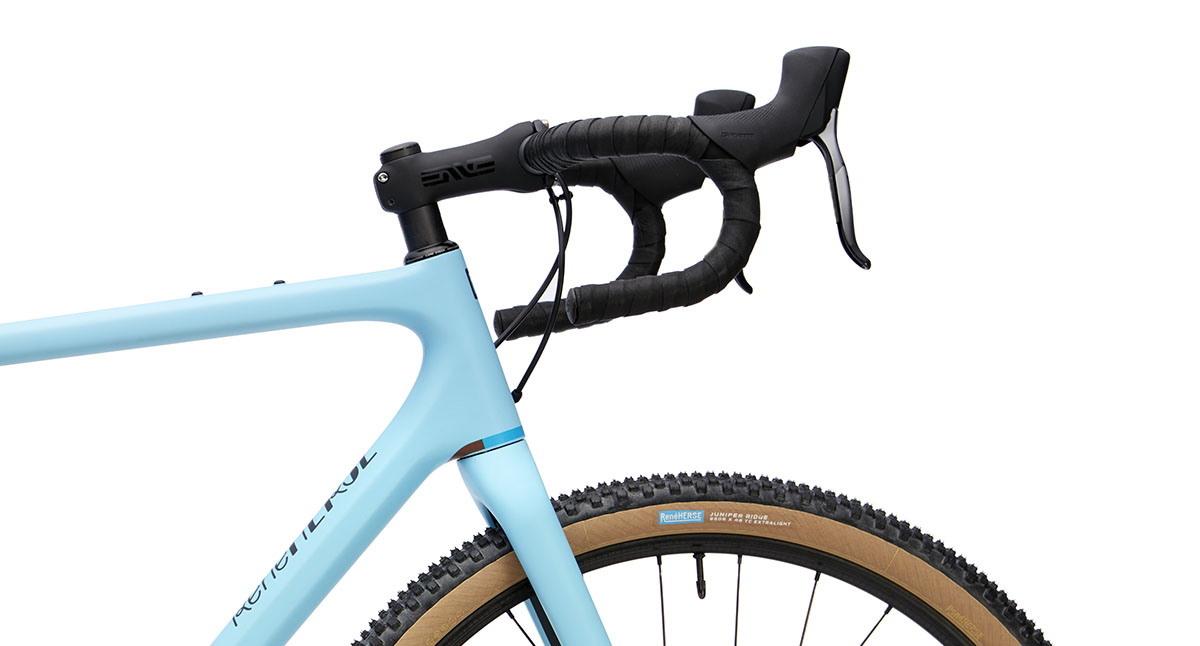Nivex Automatic Transmission
April 1, 2023: After developing the ultimate analog derailleur, it was only natural for Rene Herse to turn its attention to the other end of the spectrum: We are proud to introduce the world’s first automatic transmission for performance bicycles. Look closely at the photo above, and you’ll notice something unusual: There are no shift levers, no shifter paddles—the shifting on this bike is fully automatic.
Not having to think about shifting is convenient, for sure, but there’s more to it: Always being in the optimum gear also improves performance and reduces fatigue. In addition, there are weight savings, as the bike no longer needs shift levers. Between the improved biodynamics and the reduced weight, riders are 3-4% faster over a hilly 100-mile course on average.

The advantages are obvious, and car makers have realized them long ago: All the most extreme supercars have automatic transmissions. In fact, most American cars have been equipped with automatic transmissions for more than half a century. And yet performance cyclists still have to select their gears by hand. Even the latest electronic drivetrains require riders to push a button every time they need a different gear.
There’s a reason why nobody has developed automatic transmissions for bicycles: It’s far more complex than automatic transmissions for cars, which are relatively simple. Cars always start in first gear. And to get more power in a car, all you do is shift to a smaller gear, so the engine revs faster. Those requirements were simple to manage even in the pre-digital age, and adding computer controls has further improved the shifting performance of cars.

It’s very different for bicycles: Nobody wants a bicycle that shifts into the smallest gear every time they power away from a stop sign. And it certainly won’t suffice to pre-select a cadence—say 110 rpm—and program the shifting so it always keeps the rider’s legs spinning at the same speed. Why not? Unless you are a pro climber, optimizing your power output on uphills requires lowering your cadence slightly. And when you’re spinning up for a sprint, the last thing you want is an upshift that bogs you down just as you are launching your attack. The reality is that our cadence varies quite a bit, depending on fitness, terrain, fatigue, etc. Selecting the right gear on a bicycle isn’t as simple as it is in a car.

Artificial intelligence has finally made it possible to crack this problem. Working with dozens of pros who race on Rene Herse tires, we’ve collected a vast amount of data on when and how riders shift. Feeding power data, GPS tracking and other variables into Rene Herse’s proprietary AI system, the software has learned when it’s best to shift, for riders with different physiques and fitness levels.

The new Nivex automatic transmission consists of a specially designed GPS unit that also controls the derailleurs. The system interfaces with the power meter to detect whether a rider is attacking or taking it easy, whether they are feeling good or are fatigued. This data is correlated with the terrain—uphill, downhill, whether a Strava segment or city line sprint are approaching, etc.—to select the optimum gear for each situation.
Since every rider has slightly different preferences, the system learns each riders’ style. During this initial learning process, riders can override the electronic brain via the buttons on the Nivex head unit. The system learns the underlying patterns and adjusts gear selection according to these individual preferences. It also learns from ‘mistakes,’ for example, if it selects a larger gear only to find that the rider is bogging down. Different shift patterns can be selected via the touchscreen on the Nivex head unit. Riders can choose between ‘Recovery Spin,’ ‘Spirited Ride,’ ‘Criterium,’ ‘Time Trial,’ ‘Rough Terrain,’ as well as an ‘Individual’ mode that enables riders to create a favorite workout. ‘Race’ mode allows uploading a course, with markers where the rider plans to attack, to make sure they find themselves in the right gear when the action heats up.

The system is designed to work with all wireless derailleurs, such as SRAM eTap or the latest Shimano Di2—there’s no need to reinvent the derailleurs themselves. This means that spare parts are no problem. Every time the Nivex head unit is connected to the Internet, the software automatically updates to incorporate the latest data of all other riders using the Nivex automatic transmission. This means that the algorithm will become more and more sophisticated as more riders adopt the new system.
For the future, additional exciting developments are on the horizon. Since the computer figures out which gear to select, gear ratios can be optimized to offer the widest range with the fewest parts. One-By drivetrains are popular currently because they work well with manual shifting, where the simple shifting sequence is a big plus. But the steps between gears are large, even with Campagnolo’s 13-speed cassettes. The poor chainline in the largest and smallest gears results in premature drivetrain wear. And extremely large cogs—required for rough gravel roads—add significant weight.
With the Nivex automatic transmission, the computer selects the perfect gear through a combination of front and rear shifts. Rather than running 1 chainring and 13 cogs, Rene Herse is working on a system with 3 chainrings and 7 cogs. While using fewer parts, this offers more gears: 21 instead of 13. And for riders who want or need even more gears, the Nivex automatic transmission is compatible with the quintuple cranks Rene Herse Cycles introduced exactly five years ago.

Other integrations are possible with this system. Rene Herse is working on a dropper seatpost that uses GPS data to automatically lower the saddle when the rider approaches a steep downhill. “Once the rider is freed from operating shift levers, there’s no reason why they should manually control their dropper post,” explained Jan Heine, head of R&D at Rene Herse Cycles. The possibilities are almost unlimited. Also in development is a system that automatically adjusts tire pressures for different terrain. Based on Strava heat maps, the system will know whether the road ahead is smooth or rough. For races like Paris-Roubaix, the system automatically lowers tire pressures in the cobblestone sectors, but increases the firmness of the tires for the final sprint in the Roubaix velodrome. Heine continued: “A new era of integration is coming to bicycles. This is the biggest change since derailleurs became widespread a century ago.”
To help riders adopt the new technology, the Nivex automatic transmission integrates seamlessly into modern bikes. Bikes with wireless shifting can be retrofitted with the new system simply by adding the Nivex GPS head unit. Heine explained: “At Rene Herse Cycles, we like to keep all our products forward- and backward-compatible.” The new Nivex automatic transmission will be available on April 1, 2024.
Photo credits: Jered Gruber (Photo 3); Ansel Dickey (Photo 4)
Further Reading:
- Press reactions to the analog Nivex derailleur
- Our book The All-Road Bike Revolution explores how bicycles really work.



